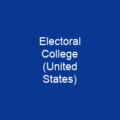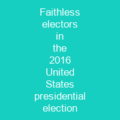Contingent elections have occurred only three times in American history: in 1801, 1825, and 1837. Each state’s delegation casts one en bloc vote to determine the president, rather than a vote from each representative. Senators, on the other hand, cast votes individually for vice president. In such a situation, the House chooses one of the top three presidential electoral vote-winners as president.
About Contingent election in brief

The Electoral College consists of 538 presidential electors from the 50 states and the District of Columbia. Electors usually pledge to vote for their party’s nominee, but some faithless electors have voted for other candidates. These presidential electors in turn cast electoral votes for those two offices. Although ballots list the names of the presidential and vice presidential candidates, voters actually choose electors when they vote for president and vicepresident. Since the election of 1824, a majority of the states have chosen their electors on a statewide winner-take-all basis, based on the statewide popular vote on Election Day. Maine and Nebraska are the only two current exceptions, as both states use the congressional district method. Since ratification of the 23rd Amendment in 1961, the presidential electors are directly elected by their respective states. The electors that make up the electoral College are directly chosen by the respective states, and they are chosen on a congressional district basis. In 1836, faithless. electors in Virginia refused to vote. for Martin Van Buren’s vice- presidential nominee Richard Mentor Johnson, denying him a majority. of the electoral vote and forcing the Senate to elect him.
You want to know more about Contingent election?
This page is based on the article Contingent election published in Wikipedia (as of Dec. 05, 2020) and was automatically summarized using artificial intelligence.







